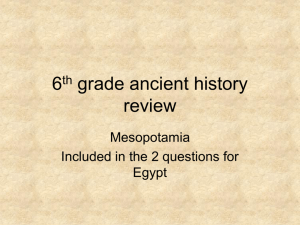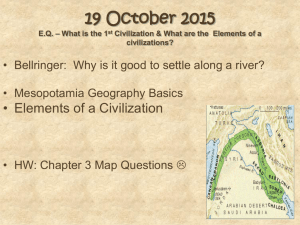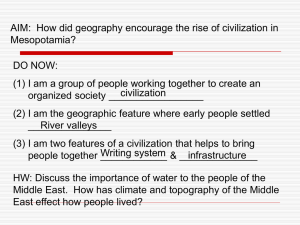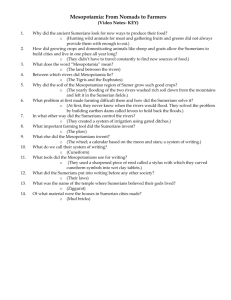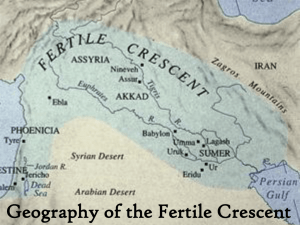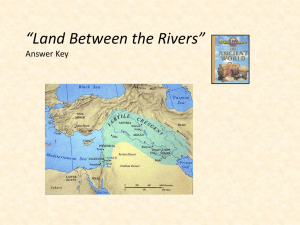Tigris & Euphrates - Solon City Schools
advertisement
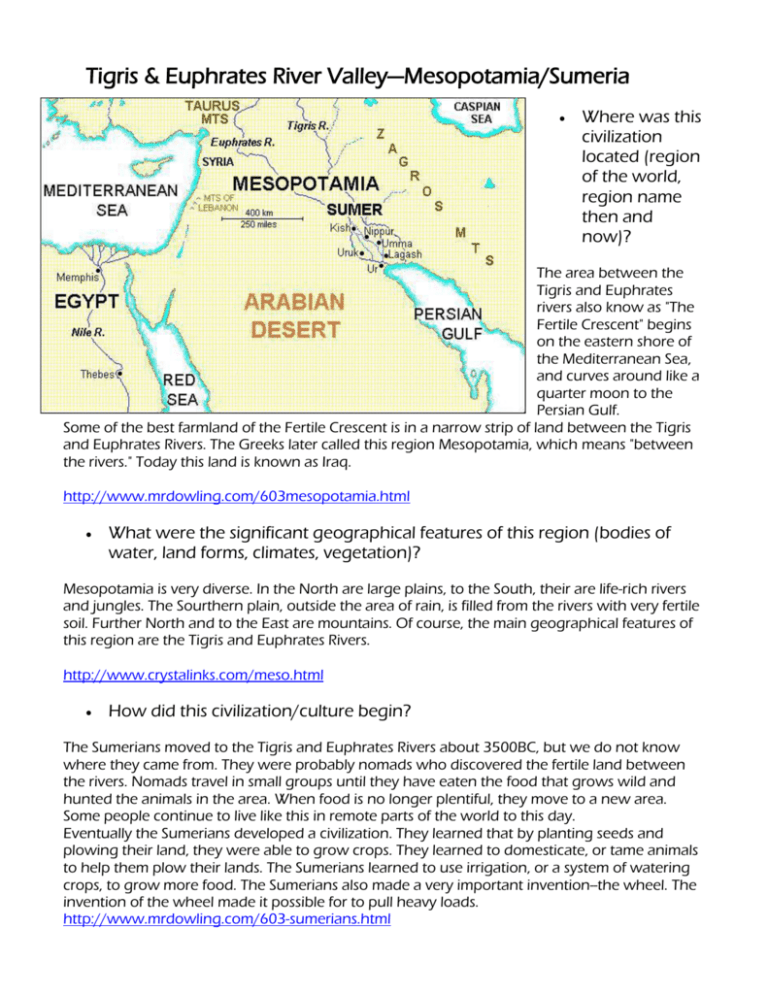
Tigris & Euphrates River Valley—Mesopotamia/Sumeria Where was this civilization located (region of the world, region name then and now)? The area between the Tigris and Euphrates rivers also know as "The Fertile Crescent" begins on the eastern shore of the Mediterranean Sea, and curves around like a quarter moon to the Persian Gulf. Some of the best farmland of the Fertile Crescent is in a narrow strip of land between the Tigris and Euphrates Rivers. The Greeks later called this region Mesopotamia, which means "between the rivers." Today this land is known as Iraq. http://www.mrdowling.com/603mesopotamia.html What were the significant geographical features of this region (bodies of water, land forms, climates, vegetation)? Mesopotamia is very diverse. In the North are large plains, to the South, their are life-rich rivers and jungles. The Sourthern plain, outside the area of rain, is filled from the rivers with very fertile soil. Further North and to the East are mountains. Of course, the main geographical features of this region are the Tigris and Euphrates Rivers. http://www.crystalinks.com/meso.html How did this civilization/culture begin? The Sumerians moved to the Tigris and Euphrates Rivers about 3500BC, but we do not know where they came from. They were probably nomads who discovered the fertile land between the rivers. Nomads travel in small groups until they have eaten the food that grows wild and hunted the animals in the area. When food is no longer plentiful, they move to a new area. Some people continue to live like this in remote parts of the world to this day. Eventually the Sumerians developed a civilization. They learned that by planting seeds and plowing their land, they were able to grow crops. They learned to domesticate, or tame animals to help them plow their lands. The Sumerians learned to use irrigation, or a system of watering crops, to grow more food. The Sumerians also made a very important invention--the wheel. The invention of the wheel made it possible for to pull heavy loads. http://www.mrdowling.com/603-sumerians.html Many different civilizations developed in this small region. The Sumerians were the first culture to develop in the Mesopotamian region but they were not the only culture. First were the Sumerians, who were replaced in turn by the Assyrians and the Babylonians. How did these geographical features impact the development of this civilization (What was their daily life/culture like eg. Clothing, food, customs, beliefs? The majority of Mesopotamia is a very dry area, so irrigation became very important to the region. These efforts to bring water to the crop lands aided in the development of the civilization. The farming successes of the Mesopotamians lead to a surplus of food, which allowed cities to develop. The cities were centers where trade, as well as well as production of crafts, and politics developed. The richness of Mesopotamia made it attractive for neighbouring peoples, and its lack of mountains made it fairly difficult to protect against invaders. The result was numerous invasions through the history, and many times did foreign warlords replace the existing rulers. Few dynasties lasted more than a few hundred years. The threat from the neighbours, was another reason for establishing the cities: The cities could be fortified and defended. http://i-cias.com/e.o/mesopotamia.htm http://www.geocities.com/Area51/Cavern/5178/main.html
